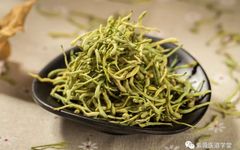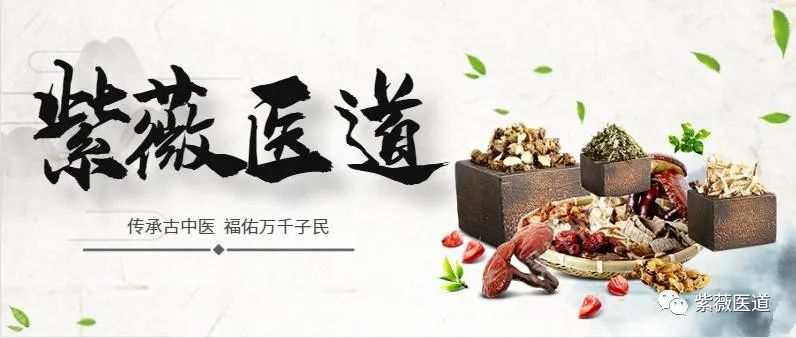
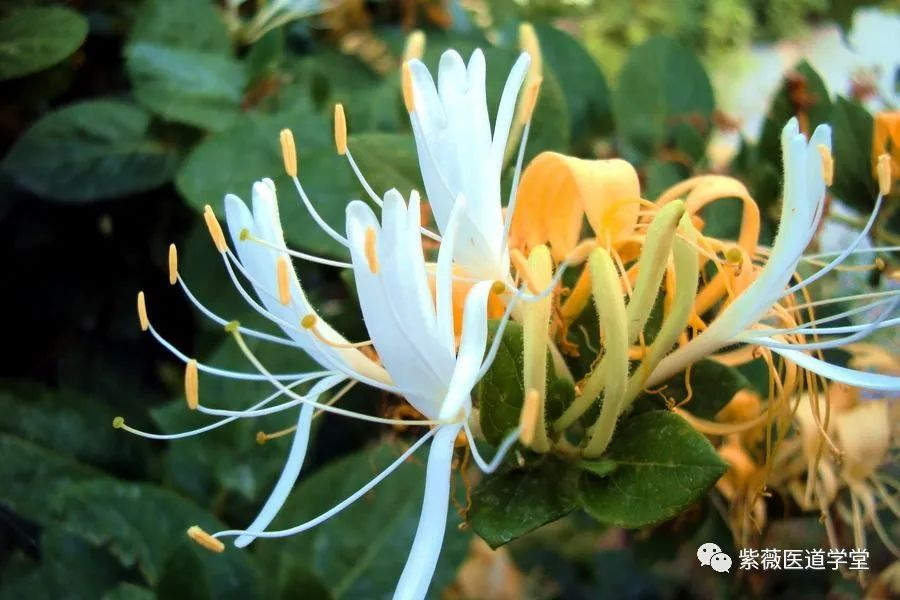
1 Honeysuckle (Jin Yin Hua), nourishes the liver, tonifies the lungs, descends rebellious Qi, disperses heat, nourishes blood, expels wind, quenches thirst, and clears summer heat, is a principal herb for sores. 2 Treats carbuncles, swellings, sores, and rheumatic toxins; Honeysuckle is indeed a crucial medicine. It can disperse toxins that have not yet formed, and can also promote the suppuration of formed toxins. However, its nature is mild, so it should be used in larger quantities or cooked with wine, or the juice can be mixed with wine for immediate consumption, or it can be ground and applied thickly with wine. For treating upper body toxins, about 1 tael (30g) is extremely effective when decocted regularly.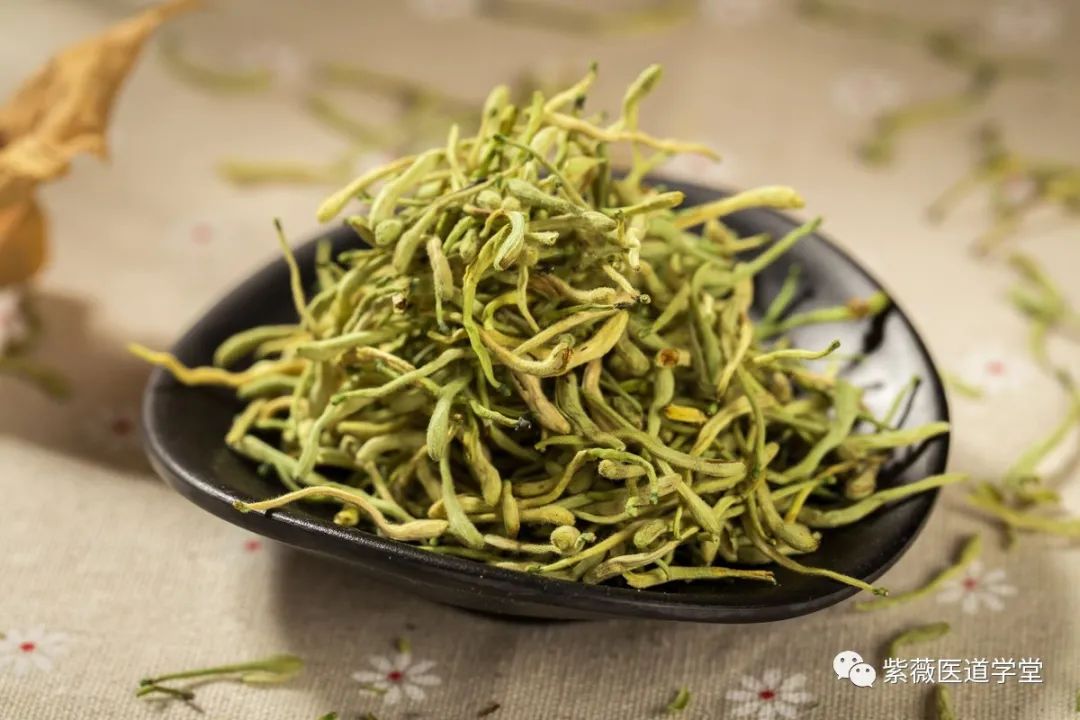 3 Other herbs can be used sparingly, but Honeysuckle must be used abundantly. Using less Honeysuckle results in weaker effects, while using more enhances its potency and efficacy. For sores and ulcers, Honeysuckle must be used, as it is the most effective at dispelling heat and toxins without depleting Qi and blood.At the onset of sores, Honeysuckle must be used to relieve pain; when sores are suppurating, Honeysuckle must be used to eliminate pus; when sores are closing, Honeysuckle must be used to promote healing. In critical cases of sores, only Honeysuckle and a large dose of ginseng can treat it, potentially saving a life.
3 Other herbs can be used sparingly, but Honeysuckle must be used abundantly. Using less Honeysuckle results in weaker effects, while using more enhances its potency and efficacy. For sores and ulcers, Honeysuckle must be used, as it is the most effective at dispelling heat and toxins without depleting Qi and blood.At the onset of sores, Honeysuckle must be used to relieve pain; when sores are suppurating, Honeysuckle must be used to eliminate pus; when sores are closing, Honeysuckle must be used to promote healing. In critical cases of sores, only Honeysuckle and a large dose of ginseng can treat it, potentially saving a life.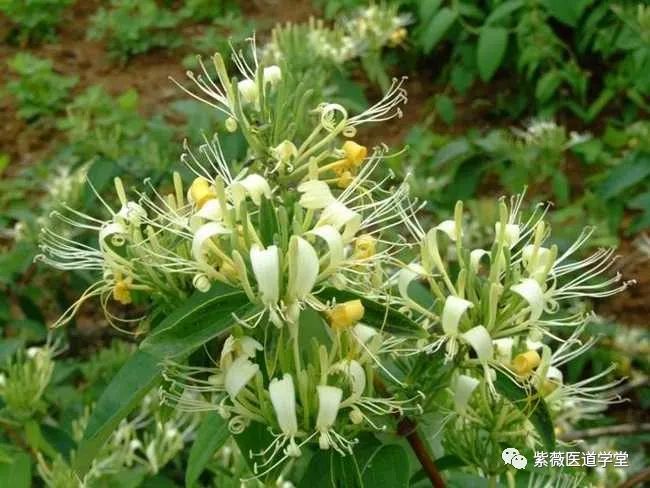 4 Medicines that attack and disperse Qi are known to disperse Qi, but Honeysuckle not only does not disperse Qi, it can also tonify Qi, and is even better at nourishing Yin. Honeysuckle can both tonify and attack; using it less emphasizes tonification, while using it more emphasizes its attacking properties. 5 In addition to its function of dispelling abscesses and toxins, Honeysuckle is also effective for abdominal distension and diarrhea, and for tonifying deficiency and treating wind, which should not be overlooked. 6 Honeysuckle combined with Angelica (Dang Gui) treats heat-toxicity and bloody dysentery; combined with Astragalus (Huang Qi), Angelica, and Licorice (Gan Cao), it can assist in treating carbuncles; combined with Licorice, it can relieve heat-toxicity and diarrhea. It is said that Honeysuckle used with Licorice is effective at relieving heat-toxicity and can prevent intestinal ulceration.
4 Medicines that attack and disperse Qi are known to disperse Qi, but Honeysuckle not only does not disperse Qi, it can also tonify Qi, and is even better at nourishing Yin. Honeysuckle can both tonify and attack; using it less emphasizes tonification, while using it more emphasizes its attacking properties. 5 In addition to its function of dispelling abscesses and toxins, Honeysuckle is also effective for abdominal distension and diarrhea, and for tonifying deficiency and treating wind, which should not be overlooked. 6 Honeysuckle combined with Angelica (Dang Gui) treats heat-toxicity and bloody dysentery; combined with Astragalus (Huang Qi), Angelica, and Licorice (Gan Cao), it can assist in treating carbuncles; combined with Licorice, it can relieve heat-toxicity and diarrhea. It is said that Honeysuckle used with Licorice is effective at relieving heat-toxicity and can prevent intestinal ulceration.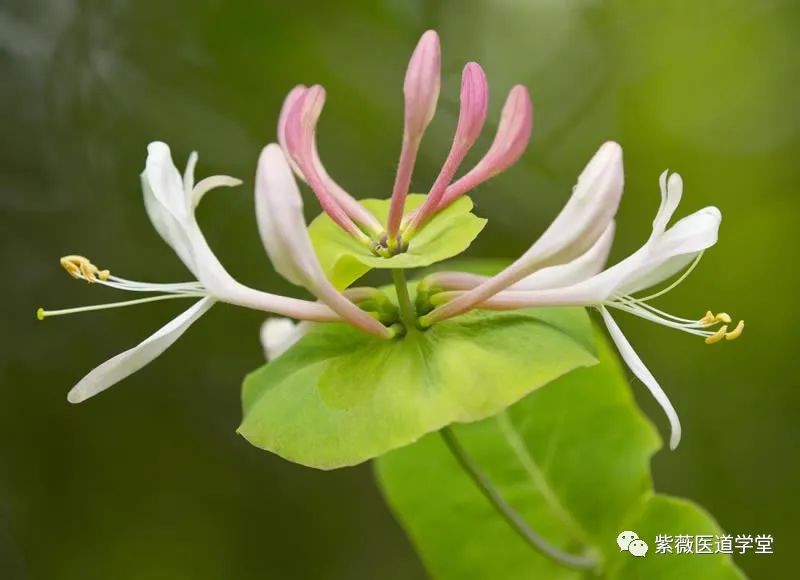 7 Diseases caused by unclean intestines, or localized inflammation that is stubborn and unhealed, with hidden abdominal pain, pain that prompts a desire to defecate, and thin, frothy stools that recur every two to three days, can be primarily treated with Honeysuckle (using 1 tael or several taels), which is effective. 8 Honeysuckle has the function of stopping diarrhea; for those with damp-heat, it can clear heat and stop diarrhea; for those without damp-heat, it can still restrain and stop diarrhea. For any diarrhea, regardless of duration, Honeysuckle can be added to the formula at 15-30 grams, yielding good results. For diarrhea with pus and blood, and a sensation of heaviness, it can be combined with 10 grams of Rhubarb (Da Huang) and 6-10 grams of Coptis (Huang Lian); for loose stools with severe abdominal pain, it can be combined with 10 grams of Areca Nut (Bing Lang) and 10 grams of Chicken Inner Gold (Ji Nei Jin); for persistent diarrhea with signs of spleen deficiency, it can be combined with Si Jun Zi Tang (Four Gentlemen Decoction). 9 For conditions where the righteous Qi is already deficient, and the pathogenic factors remain unresolved, where neither tonification nor exterior release is possible, and the gastrointestinal system is mixed with deficiency and excess, only a light and gentle purging can eliminate the pathogenic factors without harming the righteous Qi.Using Honeysuckle with Barley (Mai Ya) for a light and gentle purging does not harm the righteous Qi, embodying the principle of “lightly removing the excess,” and is effective for treating food stagnation, diarrhea, dysentery, constipation, etc., often achieving the effect of eliminating pathogens without harming the righteous Qi.
7 Diseases caused by unclean intestines, or localized inflammation that is stubborn and unhealed, with hidden abdominal pain, pain that prompts a desire to defecate, and thin, frothy stools that recur every two to three days, can be primarily treated with Honeysuckle (using 1 tael or several taels), which is effective. 8 Honeysuckle has the function of stopping diarrhea; for those with damp-heat, it can clear heat and stop diarrhea; for those without damp-heat, it can still restrain and stop diarrhea. For any diarrhea, regardless of duration, Honeysuckle can be added to the formula at 15-30 grams, yielding good results. For diarrhea with pus and blood, and a sensation of heaviness, it can be combined with 10 grams of Rhubarb (Da Huang) and 6-10 grams of Coptis (Huang Lian); for loose stools with severe abdominal pain, it can be combined with 10 grams of Areca Nut (Bing Lang) and 10 grams of Chicken Inner Gold (Ji Nei Jin); for persistent diarrhea with signs of spleen deficiency, it can be combined with Si Jun Zi Tang (Four Gentlemen Decoction). 9 For conditions where the righteous Qi is already deficient, and the pathogenic factors remain unresolved, where neither tonification nor exterior release is possible, and the gastrointestinal system is mixed with deficiency and excess, only a light and gentle purging can eliminate the pathogenic factors without harming the righteous Qi.Using Honeysuckle with Barley (Mai Ya) for a light and gentle purging does not harm the righteous Qi, embodying the principle of “lightly removing the excess,” and is effective for treating food stagnation, diarrhea, dysentery, constipation, etc., often achieving the effect of eliminating pathogens without harming the righteous Qi.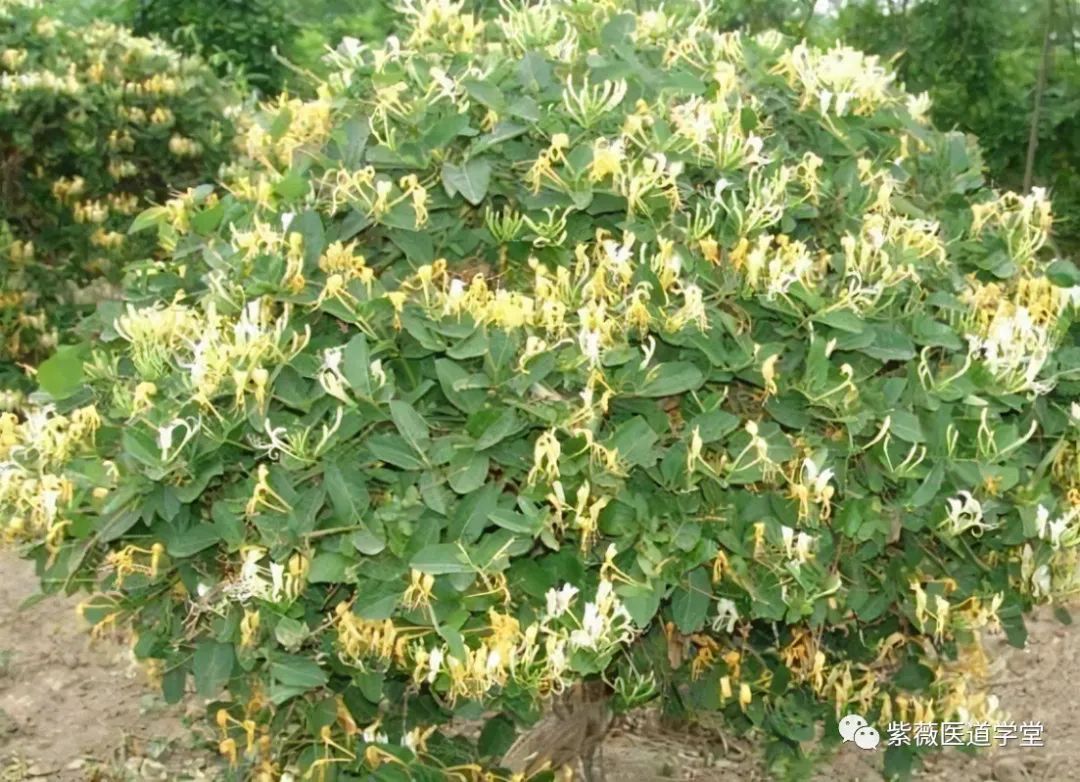 10 For treating deep abscesses, Honeysuckle can be used in a larger dose of 60 grams, combined with 30 grams of Rehmannia (Sheng Di), and 15 grams of Scutellaria (Huang Qin), decocted in water for consumption. 11 For early-stage anal abscess, use 15 grams each of Honeysuckle, Forsythia (Lian Qiao), and Soapberry (Zao Jiao Ci) decocted together, and also use the decoction for external washing, which is effective.This method can also be used post-hemorrhoid surgery to prevent complications such as anal pain and constipation. 12 Honeysuckle can clear blood heat and resolve damp toxins. For the initial onset of urticaria with skin itching, use 30 grams each of Honeysuckle and Forsythia, 15 grams of Rehmannia, and 6 grams each of Schizonepeta (Jing Jie) and Siler (Fang Feng), decocted in water for consumption.Honeysuckle can also be used as a preventive medicine, combined with Rehmannia and Peony (Mu Dan Pi), having anti-allergic effects.
10 For treating deep abscesses, Honeysuckle can be used in a larger dose of 60 grams, combined with 30 grams of Rehmannia (Sheng Di), and 15 grams of Scutellaria (Huang Qin), decocted in water for consumption. 11 For early-stage anal abscess, use 15 grams each of Honeysuckle, Forsythia (Lian Qiao), and Soapberry (Zao Jiao Ci) decocted together, and also use the decoction for external washing, which is effective.This method can also be used post-hemorrhoid surgery to prevent complications such as anal pain and constipation. 12 Honeysuckle can clear blood heat and resolve damp toxins. For the initial onset of urticaria with skin itching, use 30 grams each of Honeysuckle and Forsythia, 15 grams of Rehmannia, and 6 grams each of Schizonepeta (Jing Jie) and Siler (Fang Feng), decocted in water for consumption.Honeysuckle can also be used as a preventive medicine, combined with Rehmannia and Peony (Mu Dan Pi), having anti-allergic effects.
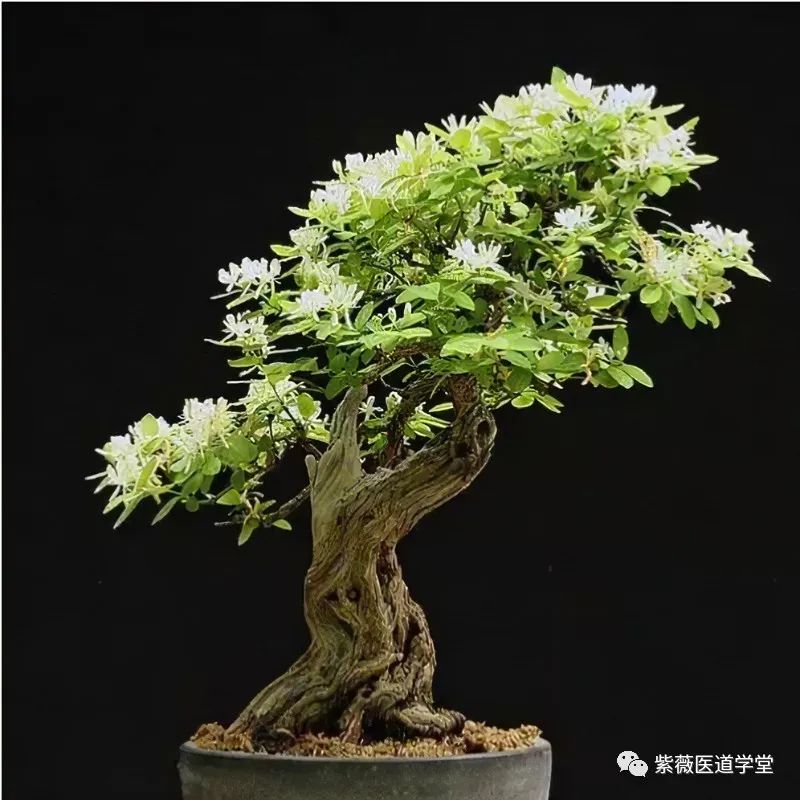
This article is excerpted from “Clinical Materia Medica,”by Tao Yu Feng, published by the People’s Health Publishing House,March 2005.This public account is used solely for academic exchange; if there is any infringement, please contact for deletion, and please indicate the source when reprinting.

